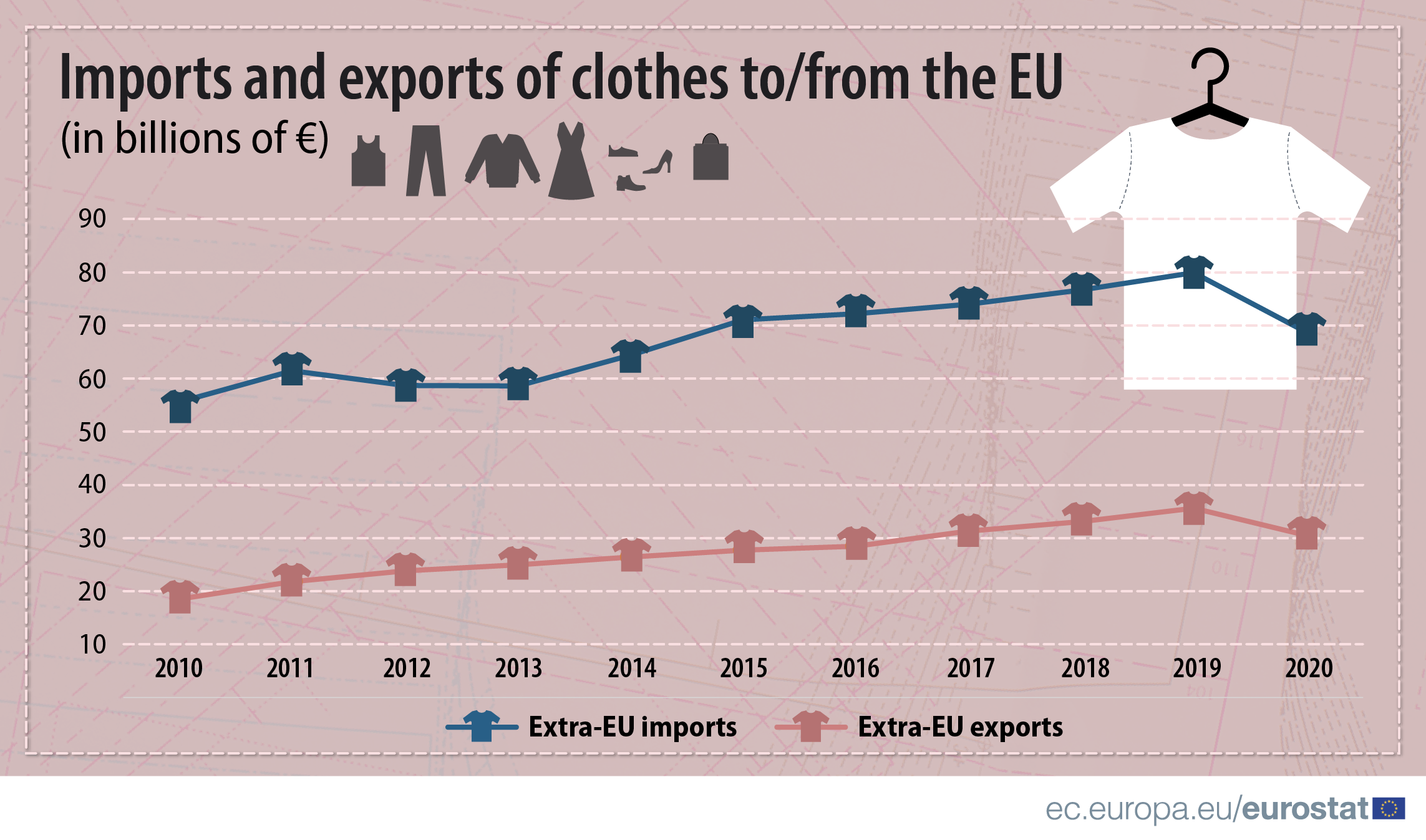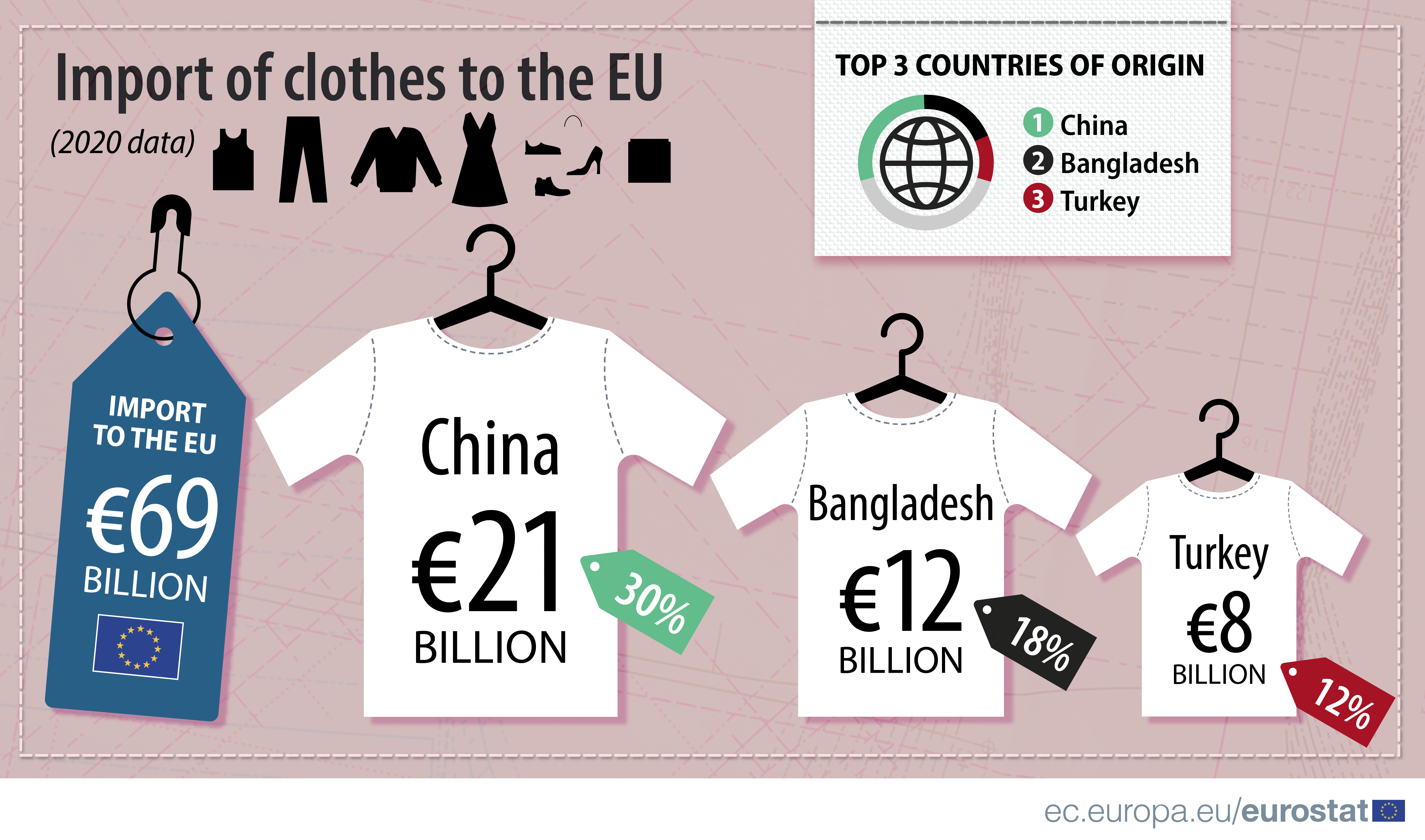To prevent the spread of the COVID-19 pandemic in 2020, countries around the world took a variety of restrictive measures, which negatively affected international trade in goods – trade in clothes not being an exception.
As a result, imports of clothing to the EU Member States decreased by 14% in value in 2020 compared with 2019, despite the increasing trend over the last decade (up by 24% since 2010).
While the EU thus imported clothes worth €69 billion in 2020 from non-EU Member States, EU exports of clothes to countries outside the EU were worth €30 billion in 2020. Compared with 2019, exports recorded a 14% drop in value, following a steady increase over the last decade (up by 64% increase compared with 2010).
 Source dataset: DS-645593
Source dataset: DS-645593
China, the main origin of imported clothes
Imports of clothes from non-EU countries came mainly from China (€21 billion, or 30% of total extra-EU clothes), Bangladesh (€12 billion, 18%) and Turkey (€8 billion, 12%), followed by the United Kingdom (€4 billion, 6%), India and Vietnam (each €3 billion, 4%) and Cambodia (€2 billion, 4%).
 Source dataset: DS-645593
Source dataset: DS-645593
Germany, the largest importer of clothes
In 2020, almost €17 billion-worth of clothes were imported by Germany from non-EU Member States (25% of total extra-EU imports of clothes imports by value). This makes Germany the largest EU importer of clothing from non-EU countries, ahead of Spain (€10 billion, 15%) and France (almost €10 billion, 14%).
Italy, the largest clothing exporter
Among EU Member States, Italy exported clothes worth €10 billion to non-EU Member States in 2020 (33% of total extra-EU exports of clothes by value). This makes Italy the largest extra-EU exporter of clothes, ahead of Germany (€5 billion, 17%), Spain (€4 billion, 14%) and France (almost €4 billion, 13%).
This news is published on the occasion of the Fashion Revolution Day (24 April).


